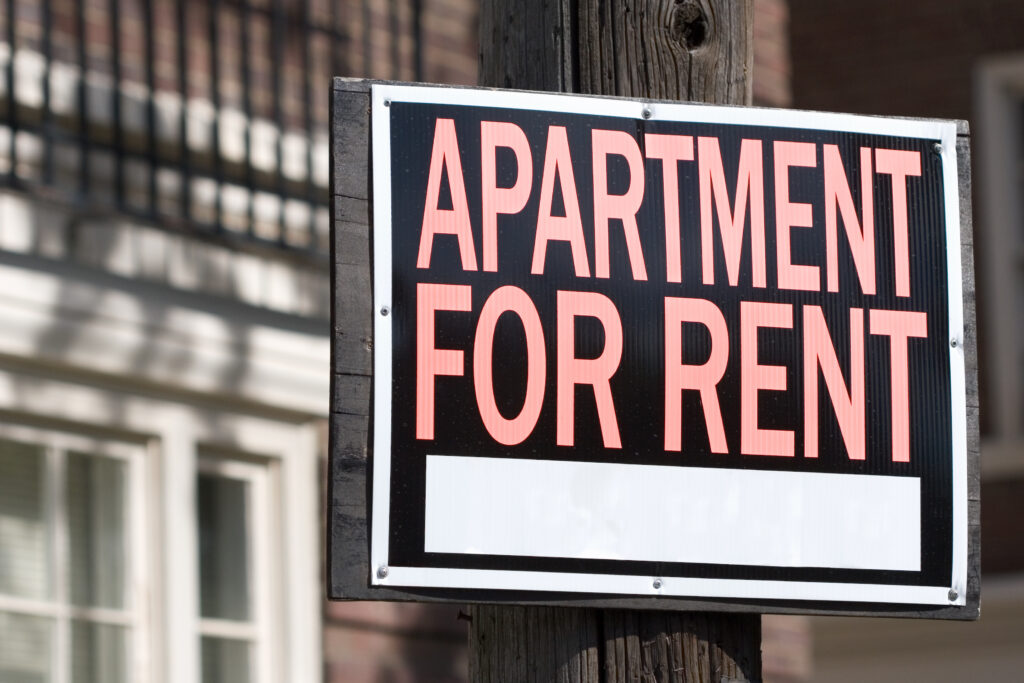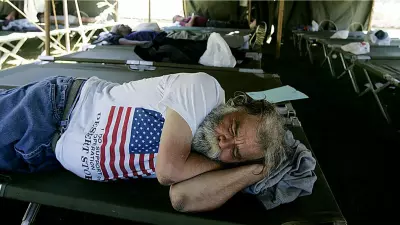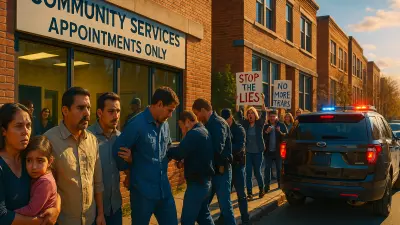This is the first part of an ongoing series looking at homelessness and housing insecurity in rural Ohio counties.

The Adams County Shelter for the Homeless can house up to 17 individuals at a time.
But that is only able to shelter a fraction of those facing housing insecurity in the Appalachian county on the banks of the Ohio River.
“There are about 500 homeless people in Adams County,” said the shelter’s director Char Brown. “We’re a tiny little shelter to serve a lot of people.”
The shelter also houses people from neighboring Brown County — which also has about 500 homeless people, she said.
If the shelter is at capacity, they tell people in search of a place to stay about other emergency shelters in Scioto, Pike, Hamilton and Highland counties. There are also a few shelters just across the border in Kentucky in Maysville.
“Clermont County doesn’t have a shelter, it shut down,” Brown said. “We just try to find a place for them. Otherwise, you know, there is no place for them. We send them as far as Dayton.”
Only about a fourth of Ohio’s emergency shelter were in the state’s 32 Appalachian counties last year, according to the U.S. Department of Housing and Urban Development 2022 continuum of care homeless assistance program housing inventory count report.
Last year, Ohio had 3,314 emergency shelter beds and 792 of them were in the Appalachian counties.
“We have a vast shortage of homeless shelters,” said Chasity Schmelzenbach, executive director of the Buckeye Hills Regional Council.
Homelessness by the numbers
On a given night last year, there were 10,654 homeless people in Ohio, according to the HUD’s 2022 report. 3,214 were people in families with children, 703 were unaccompanied homeless youth and 633 were veterans.
Ohio had 4,075 people experiencing homelessness in rural areas — the fifth highest in the country, according to the HUD report.
“In southeastern Ohio in particular, as in all areas of the state, there is a lack of housing,” said Amy Riegel, the executive director of Coalition on Homelessness and Housing in Ohio (COHHIO).
Challenges to housing
Many things can lead to someone experiencing homelessness.
“For most individuals, as they enter homelessness, it’s not just that one thing went wrong,” Riegel said. “It’s that things tend to snowball, and just continue to get worse.”
For example, a person could get sick and have to go to the hospital. They could end up missing work and may even lose their job. Medical bills start to stack up. Now they are unable to pay rent, so they get evicted.
“Once you’re evicted, it’s much harder to find housing,” Riegel said. “And so you’re in a situation where you’re now looking at affordable housing, but affordable housing that is willing to consider a person who has low income and an eviction.”
Because homelessness is multifaceted, the focus can’t only be on affordable housing, Schmelzenbach said.
“We have to address the root of that problem before they’re able to move forward in their lives,” she said.
Some people may need help finding and keeping a job with a livable wage. For others, it may be receiving help for an addiction or getting access to mental health resources.
“It’s very hard to look at the affordable housing challenges and not look at the whole range of challenges to people that are trying to get their feet under them,” said Joe Recchie, the CEO of Community Building Partners.
Southeastern Ohio was once home to coal mining, but those jobs disappeared as coal mines closed.
Emergency shelters
Shelters in rural areas can be small or cover a large area geographically, Riegel said.
“In a rural area, it might be a church that has two cots at night,” she said. “But if you’re experiencing homelessness, in another part of that county, it might be a 30-40 minute drive to get to where the homeless shelter is.”
Then transportation becomes the issue.
“A majority of our people don’t have transportation,” Brown said. “So it’s very hard for them to get a job or find a place to live without having to walk miles.”
Rural homelessness
Rural homelessness often presents itself differently than homelessness in urban areas.
“When people find themselves at the very bottom, they’re living in a tent, typically under a tree canopy somewhere,” Schmelzenbach said. “Typically, when you find those homeless areas in urbanized areas, they’re in tent camps, under an overpass. Here, it’s much less visible because it is tucked away under a tree canopy, somewhere for a little bit of shelter.”
Housing insecurity takes many different forms.
People could be squatting in an abandoned house, couch-surfing or staying in hotels. Those facing housing insecurity can be sleeping in cars, tents, the woods or yards. Generations of the same family could or multiple families could be living under the same roof.
Adams County Shelter for the Homeless
People can stay at the Adams County Shelter for the Homeless for as long they want — if they are actively looking for a job or housing.
“If they’re just sitting on their butt and doing nothing, they have 30 days,” Brown said.
Two moms have even given birth during their time staying at the shelter.
“The kids that come to the shelter, they break my heart,” Brown said.
The shelter, which provides three meals a day, tries to help people find housing. When people move out, the shelter gives them fresh, canned and frozen food to help supply their kitchen.
There is an intake process that includes an application and an interview, and the shelter looks through police records.
The struggle of finding a place
Finding an affordable place to live can be out of reach.

Full-time workers need to make at least $19.09 an hour to afford a 2-bedroom apartment in Ohio — a $2.04 increase from last year, according to a joint report from COHHIO and the National Low Income Housing Coalition (NLIHC).
Someone living in Athens County would need to make $17.81 an hour to afford a two-bedroom apartment. In Adams, Hocking, Meigs, Monroe, Morgan, Noble, Pike, Scioto, Vinton and Washington it’s $15.27.
But the minimum wage in Ohio is only $10.10.
Ohio has 447,717 extremely low-income renters, but only 177,318 rental homes are affordable and available to them — meaning a shortage of 270,399 units, according to the Ohio Housing Finance Agency.
“Even if a person isn’t homeless, even if they’re not living in a shelter or in a place unfit for human habitation, if you are severely rent burdened, your housing stability is always in question,” Riegel said.
Recently, however, there has been a flicker of hope. The state housing tax credit and the single-family housing tax credit program passed in the state budget, something Riegel said is “the right step forward to be able to start to tackle the housing deficit we have across the state.”
The state housing tax credit program will attract developers to build low-income housing by making state tax credits accessible to projects receiving federal aid. The budget limits the amount of credits at $100 million – which will hopefully create about 4,000 housing units during the program’s term, which ends on June 30, 2027.
The single-family housing tax credit program will help first-time home buyers and goes through June 30, 2027. The budget generally limits the amount of state credits that can be reserved in a fiscal year to $50 million.
Affordable housing
While there is affordable housing in Appalachian Ohio, Recchie said it’s tough to develop.
“They’re few and far between,” he said.
Buckeye Hills Regional Council is currently working on a couple different affordable housing projects.
One is a senior affordable housing project called Buckeye Fields in Washington County that will hopefully break ground later this year. The first phase will have 64 units.
The other project is redeveloping The Ridges in Athens, the area formerly known as the Athens Lunatic Asylum.
Buckeye Hills is working alongside Ohio University, the City of Athens, Athens County, and Community Building Partners to develop 720 housing units — including a mix of senior affordable housing, traditional affordable housing and some market rate units.
Megan Henry is a reporter for the Ohio Capital Journal and has spent the past five years reporting in Ohio on various topics including education, healthcare, business and crime.







